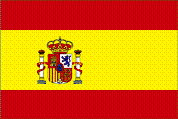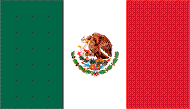 |
Spanish I |

|
Prerequisites: none
Length of Course: One year
- Description:
- Student Outcomes:
- Listen to and comprehend simple expressions in Spanish spoken at a natural, conversational speed.
- Develop a vocabulary bank of words used in daily activities.
- Imitate near-native pronunciation and intonation.
- Produce sounds understandable to a native speaker.
- Use vocabulary in context in elementary original written and oral compositions.
- Converse with acceptable proficiency using the active and passive vocabulary presented in dialogues and selected readings.
- Read and comprehend passages containing everyday vocabulary and grammatical concepts particular to Spanish language.
- Write, using syntax of the Spanish language and simple tenses of the indicative of both regular and irregular verbs.
- Evidence a better understanding of Hispanic culture and civilization and its influence throughout the world.
- Course Description:
- Spanish Vowels
- a,e,i,o,u
- All consonant sounds, stressing those least like English, such as:
- b, v
- d
- j, g
- Unaspirated p, t, k
- Dipthongs, such as
- au, ua
- ue, eu
- ai, ia
- ie, ei
- ui, iu
- Intonation and rhythm in spoken Spanish
- Structure
- Articles
- Definite: el, la, los, las
- Indefinite: un, una
- Gender: masculine vs. feminine
- Demonstrative
- Nouns
- Gender
- plurals
- Pronouns
- Personal, subject, uses
- Object
- direct
- indirect
- order of double object
- Prepositional
- Reflexive
- Adjectives
- Kinds
- descriptive
- demonstrative
- possessive
- Agreement
- masculine/feminine
- singular/plural
placement: word order
- Comparative forms
- Interrogative words
- Prepositions
- Common Prepositions
- Possession with de
- personal a
- with verbs of beginning, learning, and teaching
- Contractions
- Verbs
- present tense – indicative
- regular: /ar/, /er/, /ir/ verbs
- stem-changing: e—ie, o—ue, e—I
- irregular verbs (ser, estar, ir, dar, tener, venire, decir) (4) the –go verbs: ( hacer, poner, salir valer, traer)
- Preterit
- regular
- of –ir- stem changing (e—I, o—u)
- of other common irregular verbs
- Imperfect – introduce and contract with preterit
- present participle and its uses – brief introduction
- infinitive constructions
- ir + a = sub for future
- poder - can
- querer – want
- idiomatic expressions with tener
- deber – ought, must
- acabar de – to have just
- using gustar
- common adverbs
- Negative words
- Basic sentence patterns
- vocabulary
- common word groups and vocabulary from daily life
- Greeting and expressions of courtesy
- Classroom vocabulary
- weather and seasons
- numbers and arithmetic
- time, dates (calendar and clock)
- colors
- family
- rooms of the house.
- furniture
- clothing
- parts of the body
- diversions, recreation, sports
- everyday things (objects)
- food
- common idiomatic expressions
- special vocabulary dealing with cultural and geographical topics
- culture
- The people
- behavioral patterns
- social and religious customs
- Geography of Spanish-speaking people
- Music
- songs
- popular, modern
- traditional
- music for listening
- Art and traditional crafts
- Relationships with the U. S. A.
Spanish I stresses the four skill areas of listening, speaking, reading, and writing to develop proficiency in communication. Through short, selected dialogues and readings, students will learn grammatical constructions in context. They will also become acquainted with Hispanic cultures, including Hispanic life in the United States through study of customs, lifestyles, music, history, and art.
Students should be able to